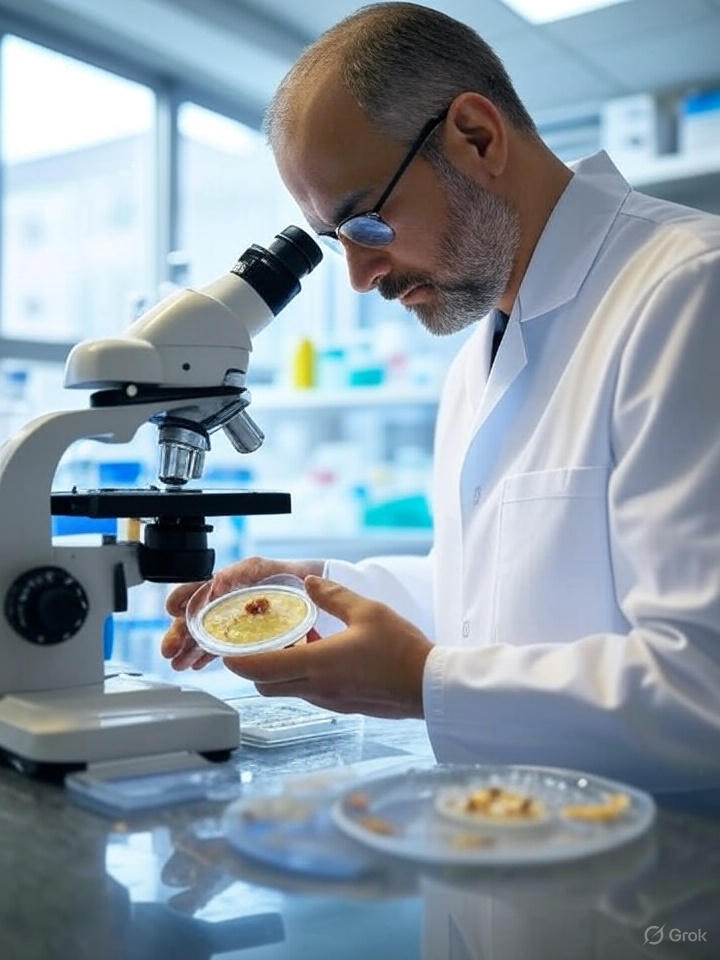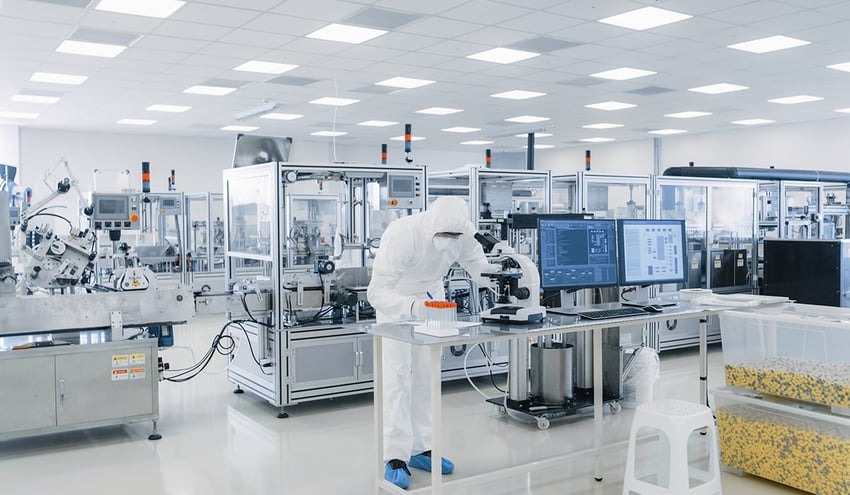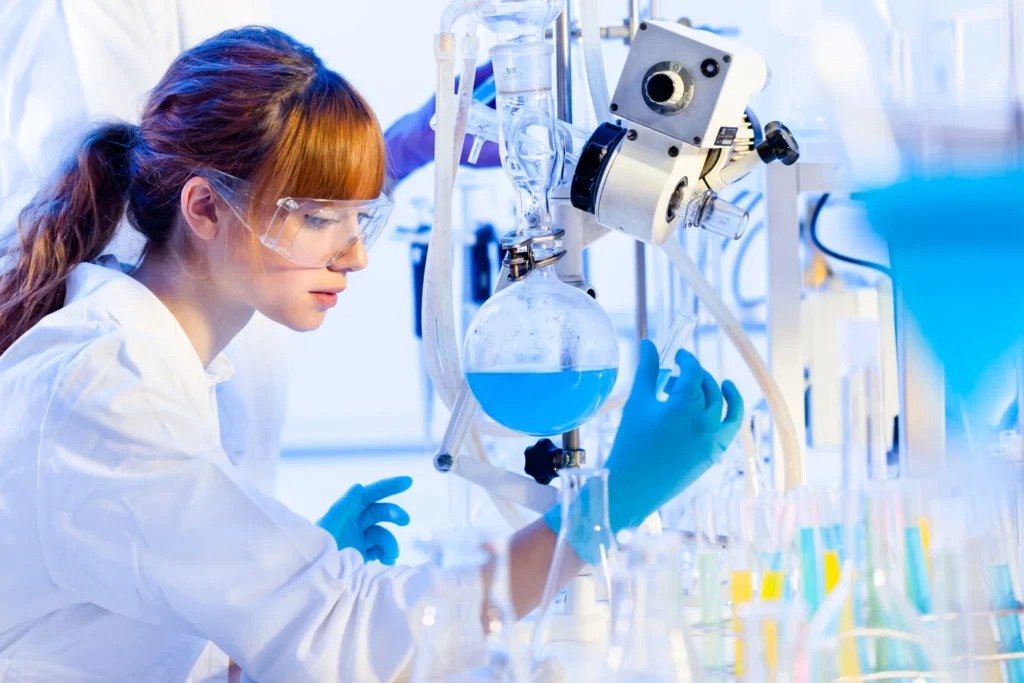The Ultimate Guide for Professionals, Researchers, and Entrepreneurs
Introduction
A microbiology laboratory is at the heart of advancements in medicine, research, industry, and education. For professionals, researchers, and business owners, setting up a microbiology lab is a strategic investment that demands meticulous planning, regulatory compliance, and a deep understanding of technology and market needs. This comprehensive guide covers every facet of establishing a microbiology lab—whether for clinical diagnostics, research, industrial testing, or educational training. Throughout, you’ll find friendly keywords such as microbiology lab setup, microbiology lab equipment, diagnostic laboratory business plan, and laboratory accreditation to enhance search visibility.

What is a Microbiology Lab?
A microbiology laboratory is a specialized facility where microorganisms—such as bacteria, fungi, viruses, and parasites—are isolated, cultured, identified, and analyzed. These labs are essential in hospitals, diagnostic centers, research institutes, pharmaceutical companies, food and beverage industries, and educational institutions.
Key Functions of a Microbiology Laboratory
- Disease Diagnosis: Detection and identification of infectious agents in clinical samples.
- Research: Studying microbial physiology, genetics, and ecology.
- Industrial Quality Control: Testing products for microbial contamination in food, water, and pharmaceuticals.
- Environmental Monitoring: Assessing microbial populations in air, soil, and water.
- Education: Training students and professionals in microbiological techniques.
Planning Your Microbiology Lab
1. Define Your Lab’s Purpose
- Medical Diagnostics: Focus on patient testing and clinical services.
- Research: Emphasize experimental protocols and advanced instrumentation.
- Industrial/Quality Control: Prioritize high-throughput screening and regulatory compliance.
- Educational: Support practical training and curriculum requirements.
2. Market Analysis and Business Plan
- Target Market: Hospitals, clinics, research organizations, industry partners, educational institutions.
- Competitive Analysis: Assess local and regional competitors, their services, and pricing.
- Regulatory Landscape: Understand licensing, accreditation, and compliance requirements (e.g., NABL, CAP, CLIA).
- Financial Projections: Estimate startup costs, operational expenses, and revenue streams.
- Market Trends: Analyze emerging trends such as automation, digital microbiology, and AI-driven diagnostics.
3. Facility and Infrastructure
- Location: Choose a site with easy access for clients and sample logistics.
- Space Planning: Allocate areas for media preparation, sample processing, analytical work, storage, and waste disposal.
- Utilities: Ensure reliable water supply, drainage, electricity (with backup), and ventilation.
- Sanitation: Use materials for walls, ceilings, and floors that are easy to clean and resistant to biohazards.
- Security: Restrict access to authorized personnel only.
Essential Equipment and Instruments
A well-equipped microbiology lab should have the following core instruments:
| Equipment | Purpose/Function |
|---|---|
| Autoclave | Sterilizes media, glassware, and waste |
| Biosafety Cabinet | Protects samples and personnel from contamination |
| Laminar Air Flow Hood | Provides aseptic workspace |
| Incubator | Maintains optimal temperature for microbial growth |
| Hot Air Oven | Sterilizes glassware using dry heat |
| Analytical Balance | Precise weighing of samples and reagents |
| Centrifuge | Separates components based on density |
| Microscope (Binocular/Compound) | Visualizes microorganisms |
| pH Meter | Measures acidity/alkalinity of solutions |
| Spectrophotometer | Quantifies biomolecules by measuring light absorption |
| Colony Counter | Counts microbial colonies on plates |
| Water Bath | Maintains constant temperature for reactions |
| Vortex Mixer | Mixes solutions quickly and efficiently |
| Micro Pipettes | Accurate liquid handling |
| Deep Freezer | Stores reagents and biological samples |
| Refrigerator | Stores media and samples |
| Glassware & Consumables | Beakers, flasks, pipettes, slides, Petri dishes |
| Computer & Printer | Data management and reporting |
| Anaerobic Jar | Cultivates anaerobic organisms |
| Fumigator/UV Chamber | Disinfects lab surfaces and air |
This list should be tailored to your lab’s specific focus (clinical, research, industrial, or educational.
Laboratory Design and Workflow
Layout Considerations
- Reception and Accessioning Area: For patient registration and sample drop-off.
- Media Preparation Room: Dedicated space for preparing culture media with sinks, autoclaves, and storage.
- Sample Processing Area: Benches for handling and processing samples.
- Incubation Room: Houses incubators for undisturbed microbial growth.
- Analytical Section: Contains microscopes, spectrophotometers, and colony counters.
- Storage: For samples, reagents, and hazardous materials.
- Waste Management: Area for safe disposal of biohazardous and chemical waste.
- Administrative Office: For data analysis, documentation, and reporting.
Workflow Optimization
- Unidirectional Flow: Ensure samples move in one direction to minimize cross-contamination.
- Zoning: Separate clean and contaminated areas.
- Automation: Implement Laboratory Information Management Systems (LIMS) for tracking and reporting.
- Space Requirements: Vary by lab size and purpose; plan for future expansion.
Staffing and Training
Key Personnel
- Lab Director/Manager: Oversees operations, compliance, and quality assurance.
- Microbiologists: Design and interpret tests, troubleshoot instruments.
- Medical Laboratory Technologists: Perform routine and specialized analyses.
- Technical Assistants: Support sample processing and equipment maintenance.
- Administrative Staff: Handle billing, logistics, and customer service.
Training and Competency
- Initial Training: On SOPs, equipment use, and safety protocols.
- Ongoing Education: Updates on new technologies, quality standards, and regulatory changes.
- Competency Assessment: Regular evaluation to ensure proficiency and compliance.
Safety and Quality Assurance
Safety Measures
- Personal Protective Equipment (PPE): Lab coats, gloves, eye protection, and masks.
- Biosafety Cabinets: For handling infectious materials.
- Chemical Safety: Proper storage, labeling, and handling of reagents.
- Fire Safety: Extinguishers, alarms, and emergency exits.
- Waste Disposal: Segregation and safe disposal of biological and chemical waste.
- Universal Precautions: Treat all specimens as potentially infectious.
- Disinfection: Clean work areas before and after use with appropriate disinfectants.
- Emergency Procedures: Know the locations of eyewash stations, showers, and first aid kits.
Quality Control
- Internal QC: Regular calibration of instruments, use of control samples.
- External QC: Participation in proficiency testing programs.
- Documentation: Maintain detailed records of procedures, results, and incidents.
- Accreditation: Seek certification from recognized bodies (e.g., NABL, CAP, ISO).
Common Microbiology Lab Tests
| Test Profile | Analytes/Targets | Clinical/Industrial Relevance |
|---|---|---|
| Bacterial Culture | Bacteria in blood, urine, sputum, etc. | Infection diagnosis, quality control |
| Fungal Culture | Yeasts and molds in clinical/industrial samples | Fungal infections, contamination testing |
| Antibiotic Sensitivity | Bacteria vs. antibiotics | Guides therapy, monitors resistance |
| Water Testing | Total coliforms, E. coli, pathogens | Water safety, compliance |
| Food Microbiology | Pathogens in food products | Food safety, shelf-life studies |
| Environmental Monitoring | Air, soil, and surface microbes | Environmental safety, contamination control |
| Molecular Diagnostics | PCR for microbial DNA/RNA | Rapid pathogen identification |
These tests form the backbone of clinical, industrial, and environmental microbiology.
Regulatory Compliance and Accreditation
- Licensing: Obtain necessary licenses from local and national authorities (e.g., State Government License, NABL, CLIA).
- Accreditation: Demonstrates adherence to international quality standards.
- Documentation: Maintain SOPs, equipment logs, and personnel records.
- Audit Readiness: Regular internal and external audits to ensure compliance.
Budgeting and Financial Planning
Startup Costs
- Infrastructure: Renovation, utilities, and security.
- Equipment: Purchase, installation, and calibration.
- Consumables: Reagents, glassware, PPE, and disposables.
- Staffing: Salaries, training, and benefits.
- Licensing and Accreditation: Application fees and inspection costs.
Operational Expenses
- Reagent and Consumable Replenishment
- Equipment Maintenance and Service Contracts
- Utilities (Electricity, Water, Internet)
- Waste Disposal Services
- Insurance (Liability, Fire, Theft)
Revenue Streams
- Diagnostic Testing Services
- Research Contracts and Grants
- Training and Educational Programs
- Consulting and Quality Assurance Services
Develop a detailed business plan with financial projections to attract investors and manage growth.
Marketing and Growth Strategies
- Digital Marketing: optimized website, social media, and online advertising.
- Partnerships: Collaborate with hospitals, clinics, and research organizations.
- Quality Differentiation: Emphasize accreditation, turnaround time, and advanced technology.
- Customer Service: Reliable reporting, transparent billing, and responsive support.
- Continuous Improvement: Invest in staff training, equipment upgrades, and new test offerings.
Trends and Innovations in Microbiology
- Automation and Robotics: Increase throughput, reduce errors, and improve reproducibility.
- Point-of-Care Testing: Decentralized testing for rapid results.
- Molecular Diagnostics: PCR, next-generation sequencing, and genetic profiling.
- Digital Microbiology: Image analysis, remote diagnostics, and AI integration.
- Sustainable Practices: Green chemistry, energy-efficient equipment, and waste reduction.
Checklist for Setting Up a Microbiology Lab
- Define lab purpose and scope
- Conduct market and competitor analysis
- Prepare a detailed business plan
- Secure funding and location
- Design lab layout and workflow
- Procure essential equipment and consumables
- Recruit and train qualified staff
- Implement safety and quality protocols
- Obtain necessary licenses and accreditations
- Launch marketing and outreach initiatives
Conclusion
Establishing a microbiology laboratory is a complex but rewarding endeavor that blends science, business, and regulatory compliance. By following best practices in planning, infrastructure, equipment selection, staffing, safety, and quality assurance, you can build a lab that meets the needs of healthcare, research, industry, or education. Stay updated with technological advancements and regulatory changes to ensure your lab remains competitive and compliant.
Keywords Used
- microbiology lab setup
- microbiology lab equipment
- diagnostic laboratory business plan
- laboratory accreditation
- laboratory safety protocols
- microbiology tests
- laboratory workflow
- laboratory quality control
- clinical diagnostics
- research laboratory
- laboratory automation
- laboratory compliance
- laboratory marketing strategies



